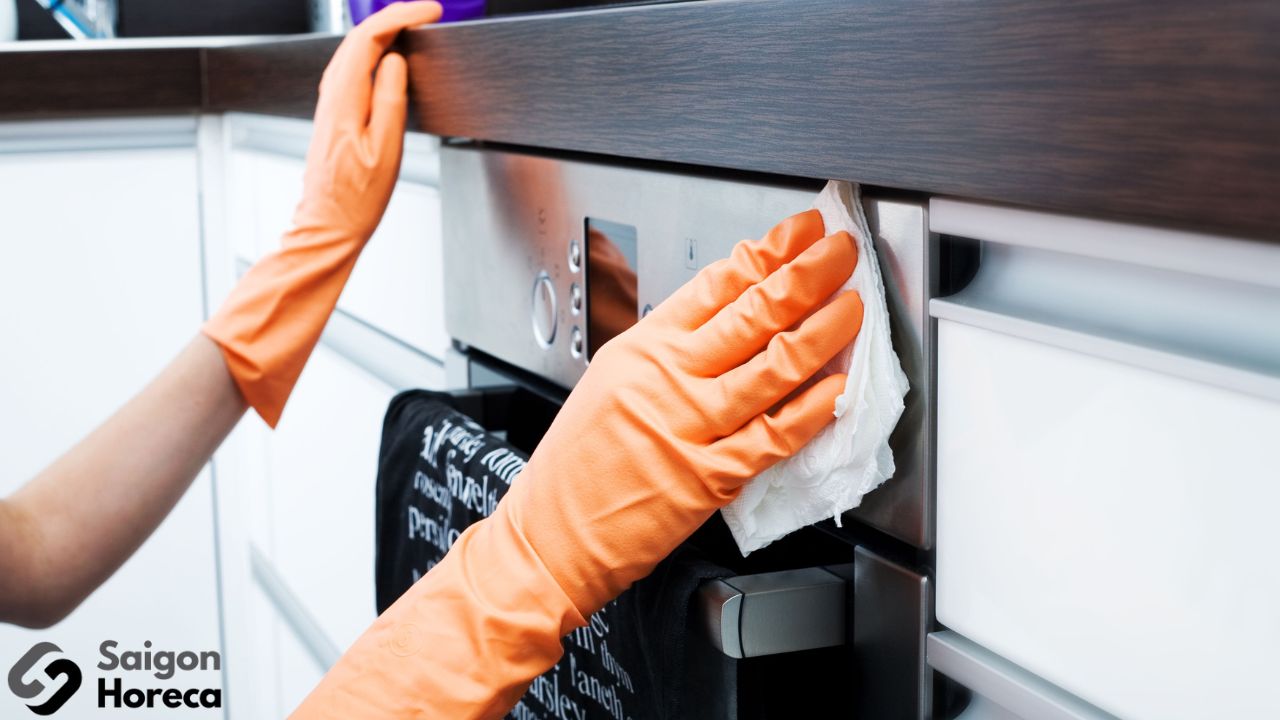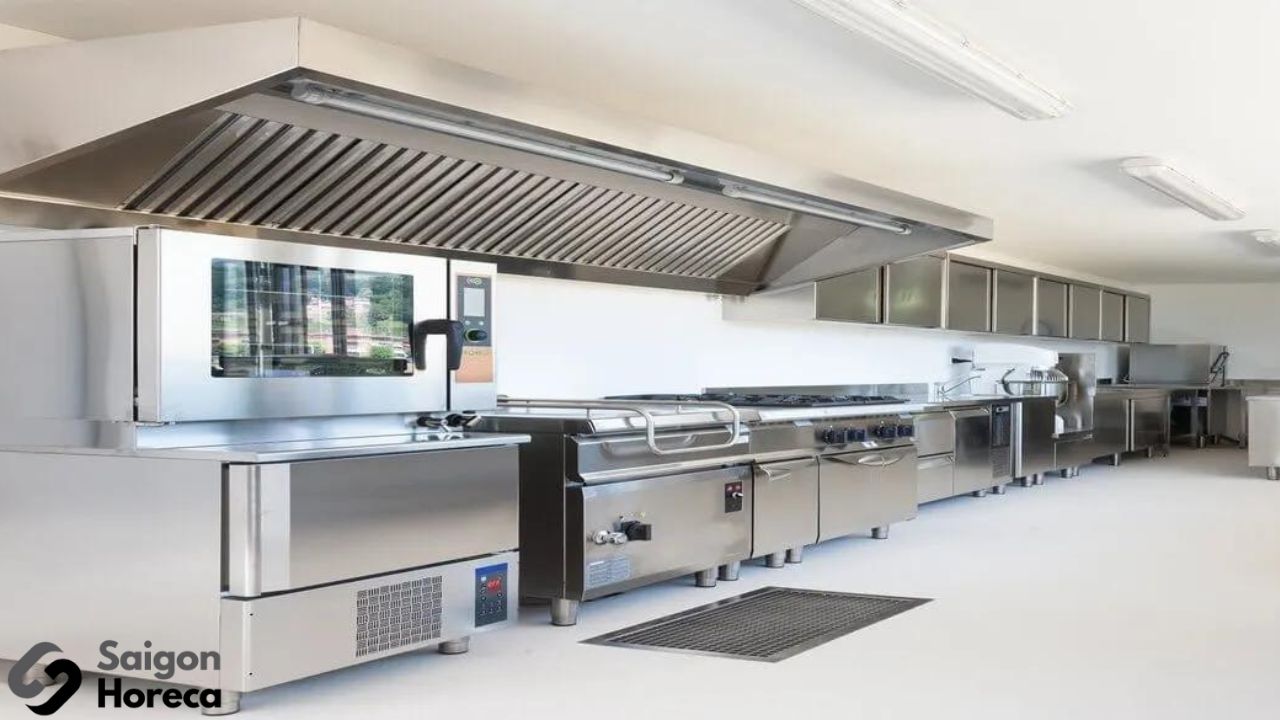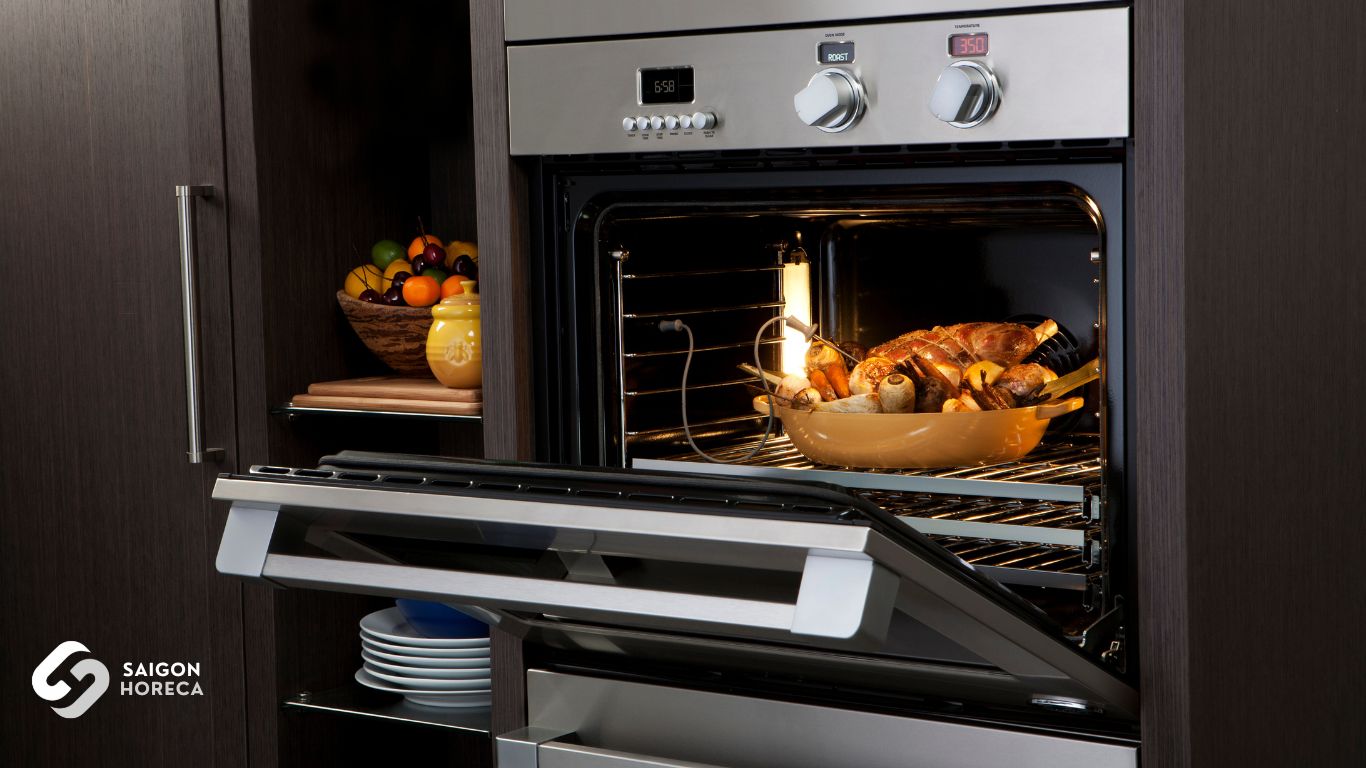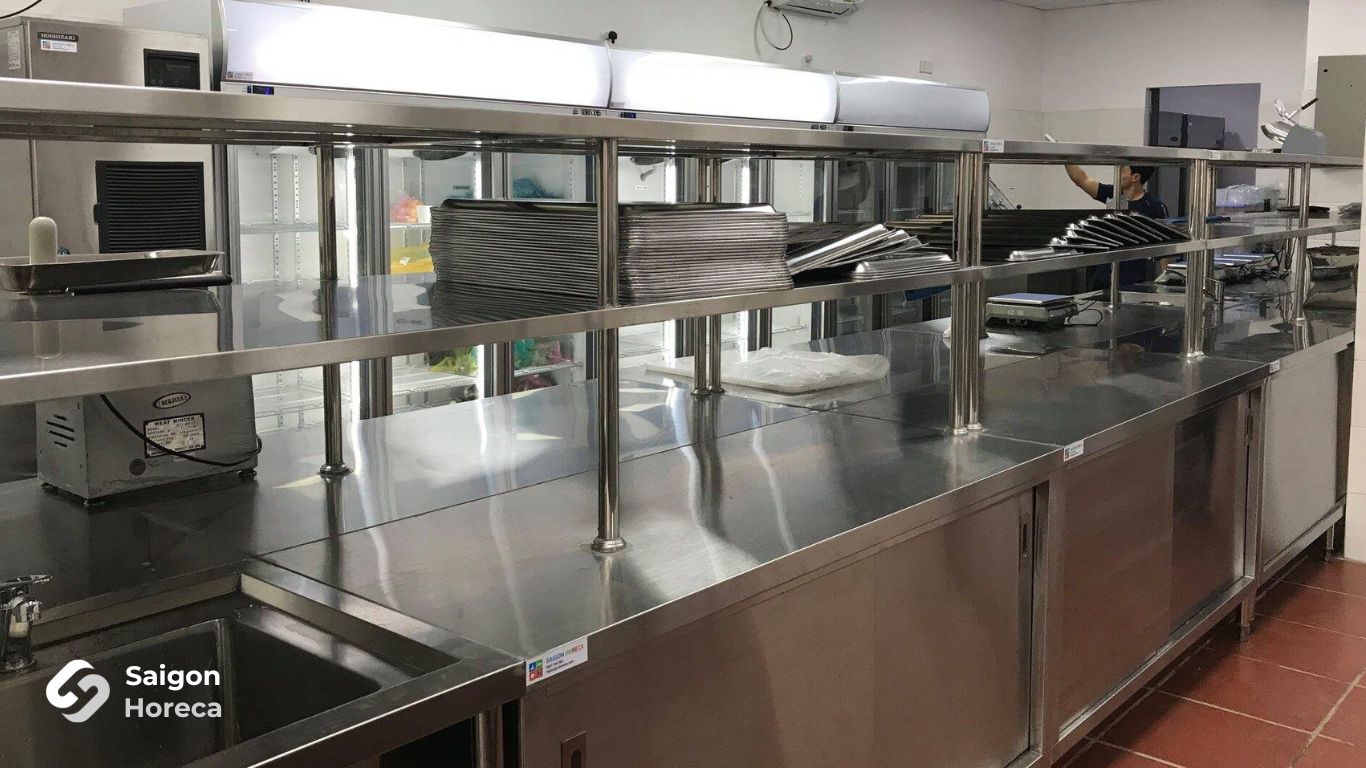Looking to elevate your grilled dishes with a Salamander Grill? With its ability to grill quickly and evenly while giving […]
Read More

- News
Conquering Commercial Kitchens: Secrets to Maintaining Stainless Steel Equipment
- December 6, 2023
In the continuous and demanding environment of restaurant and hotel kitchens, the proper maintenance of stainless steel equipment plays a crucial role in ensuring both cleanliness and long-term performance. Stainless steel, known for its corrosion resistance and ease of cleaning, is a common material used in the production of various kitchen tools such as pots, pans, food storage racks, and many other utensils.
This article will share effective maintenance tips for stainless steel equipment in restaurant and hotel kitchens, ensuring not only cleanliness but also durability and food safety. Join us as we explore practical and detailed methods below to maintain and enhance the quality of stainless steel equipment in your professional kitchen space.
In this article
Causes of Decreased Quality in Stainless Steel Sinks in the Kitchen
During usage, stainless steel equipment in the kitchen, such as sinks, frequently faces environmental factors that can affect their quality and durability. Stainless steel, also known as stainless steel, is often chosen for its corrosion resistance and ease of cleaning. However, if proper hygiene is not maintained, they can be impacted by environmental factors.
One common issue is improper cleaning. Using strong or incorrect cleaning agents can reduce the corrosion-resistant layer on the surface of stainless steel. This can lead to a loss of the protective capabilities of stainless steel against environmental influences. To address this issue, the most crucial step is to choose specialized cleaning products for stainless steel and adhere to usage instructions.
Additionally, grease and scratches are other factors that can reduce the protective efficiency of stainless steel. Grease and scratches can diminish the interaction between chromium on the surface of stainless steel and the air, reducing the corrosion resistance. Avoiding contact with grease and properly storing stainless steel equipment to prevent scratches is essential.
Another issue is a lack of regular care and maintenance. Neglecting care and maintenance can lead to corrosion and a loss of shine on the surface of stainless steel. This can be resolved by implementing regular care and maintenance steps, including cleaning and lubrication when necessary.
Lastly, inappropriate chemical exposure is a significant factor that can significantly impact the quality of stainless steel. Using strong chemical cleaners can have negative effects on the chromium protective layer on the surface of stainless steel. Choosing cleaning products that do not contain chemicals harmful to stainless steel is crucial to protect and maintain the quality of the equipment over time.
Storing Stainless Steel Equipment in Hotel Restaurant Kitchens
Stainless steel sinks, a crucial component of restaurant and hotel kitchen spaces, often face issues such as yellowing and rust. The main cause usually stems from the water source, which may contain salt, minerals, or other chemicals. Rectifying this requires immediate addressing of the water source issue because, if left unresolved, stainless steel sinks will continuously corrode, leading to unnecessary waste and costs for businesses.
Remedial Measures
Step 1: Clean and Remove Dirt:
- Start by cleaning dust and deposits on the stainless steel sink.
- Use surface cleaning tools and ensure thorough hygiene with soft fabric and sanitary paper.
Step 2: Water Treatment:
- Promptly address issues with the water source, such as removing salt, minerals, or chemicals from the household water source.
Step 3: Proper Use of Cleaning Agents:
- If the surface of the stainless steel sink is discolored, use specialized cleaning agents, avoiding high-acid or high-alkaline cleaners that can corrode the metal.
Cleaning with Water and Specialized Cleaning Agents
- Water Cleaning:
- Utilize cloths and cleaning tools to scrub and polish the surface of the stainless steel sink.
- Wipe off any lingering water stains with a dry towel.
- Use of Soap and Glass Cleaning Solution:
- Dissolve dish soap and dishwashing water in warm water, adjusting the concentration based on the sink’s dirtiness.
- Spray the glass cleaning solution on the stainless steel sink surface and wipe with a cleaning cloth.
- Use of Specialized Cleaning Solution:
- For stubborn stains, employ specialized cleaning solutions.
- Adhere to the usage instructions to avoid chemical impacts on health and the equipment’s quality.
These measures not only help maintain the beauty and durability of stainless steel sinks but also ensure food safety in the professional restaurant and hotel environment.


Things to Avoid During the Cleaning Process of Stainless Steel Equipment
When it comes to preserving and cleaning stainless steel equipment, there are several things to avoid to ensure not only aesthetic appeal but also long-term durability.
- These types can scratch the steel, creating marks and openings for corrosion and rust. Instead, use brushes with soft bristles and gentle cleaning agents to protect the stainless steel surface.
- Cleaning agents with high acid content can destroy the protective layer on the stainless steel surface, paving the way for corrosion and rust. Opt for products with low acid content that are suitable for stainless steel.
- Keep utensils in elevated and clean places to avoid dust accumulation and residue. This not only enhances aesthetics but also preserves the lifespan of kitchen equipment.
- When cleaning, avoid applying excessive force, especially in sensitive areas. Unnecessary pressure can damage the surface and reduce the shine of the stainless steel.
- Regularly inspect and maintain stainless steel equipment, including cleaning, checking for scratches, and maintaining moving parts to ensure smooth operation.
These precautions not only contribute to maintaining the beauty of stainless steel equipment but also increase their durability and performance, providing peace of mind and cost savings for businesses. If you need advice or installation of professional kitchen equipment, feel free to contact us for professional support and the most reasonable procurement costs.
>>> Inox 304 is considered a top-grade material and an indispensable component in various manufacturing industries, especially in the meticulous selection of kitchen equipment for your restaurant. Therefore, let’s explore and discover more about different types of stainless steel, with a special focus on Inox 304: Stainless Steel 304 – Durability and Versatile Applications.
Monday - Friday
from 8h00 to 18h00
Số 40 Đường số 6, KDC Melosa Khang Điền, Phú Hữu, HCM.
Contact anytime
In the context of the rapidly growing culinary and food service industry, investing in industrial kitchen equipment for a canteen […]
Read More




